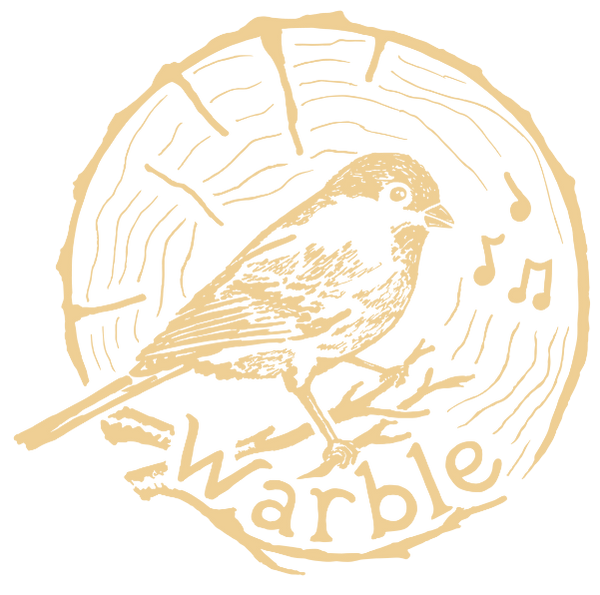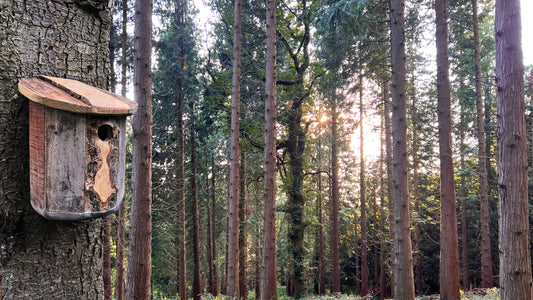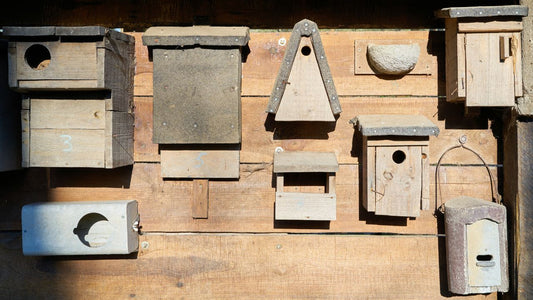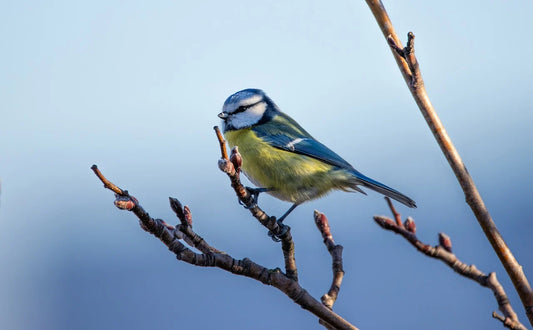A Guide to Different Types of Nest Boxes and the Birds They Attract
Providing a safe, well-designed nest box is one of the best ways to encourage birds to nest in your garden. However, the type of entrance a nest box has plays a crucial role in determining which birds will use it. Different species have specific preferences for the size, shape, and location of the entrance, and choosing the right box can make your garden a haven for a variety of birds.
Here’s a guide to help you understand the different types of nest boxes based on entrance design and which birds they attract:
1. Small Round Entrance Holes
- Size: 25-28mm
- Birds Attracted: Blue tits, tree sparrows, crested tits, coal tits and marsh tits.
- Description: Boxes with small round holes are ideal for smaller birds that prefer snug, secure spaces. A 25mm hole specifically suits blue tits, while a slightly larger 28mm hole can also attract coal tits and marsh tits. The small size of the entrance keeps out larger, more aggressive birds and predators, reducing competition and increasing the likelihood of smaller birds nesting.
2. Medium Round Entrance Holes
- Size: 32mm
- Birds Attracted: Blue tits, great tits, house sparrows and nuthatches.
- Description: A 32mm hole is versatile, accommodating a wide range of species. This size not only attracts blue tits and great tits but also house sparrows and even nuthatches. By choosing a 32mm nest box, you maximise the chances of occupancy by various birds, making it an ideal choice for diverse gardens.
3. Oval or Elongated Holes
- Birds Attracted: Starlings.
- Description: Larger species, such as starlings, prefer oval-shaped entrances. These entrances provide enough room for these social and active birds while keeping out even larger competitors. Nest boxes for starlings should also have a more spacious interior to accommodate their size.
4. Open-Fronted Nest Boxes
- Birds Attracted: Robins, wrens, pied wagtails, and spotted flycatchers.
- Description: Open-fronted boxes are designed without a small entrance hole, making them accessible for birds that prefer less enclosed spaces. These boxes should be placed in well-sheltered areas, as the open design offers less protection from predators and the elements. Robins, in particular, are drawn to these boxes if placed near dense shrubs or hedges.
5. Specialised Entrance Designs
- Birds Attracted: Swifts, house martins, and owls.
- Description: Certain species require specialised box designs with unique entrances. For example:
- Swifts: Narrow, horizontal slots are ideal for swifts, as they prefer to swoop directly into their nests. These boxes are usually mounted high on buildings.
- House Martins: These birds build mud nests, so house martin boxes often come with pre-formed cup-like entrances.
- Owls: Large entrance holes (100mm+) cater to species like barn owls. These boxes are typically much larger and placed in quiet, rural locations.
Why Entrance Design Matters
Entrance design not only determines which birds use your nest box but also protects them from predators and competition. A well-designed entrance ensures the safety and comfort of the birds, increasing the chances of successful nesting. Additionally, providing the right type of nest box contributes to the conservation of declining bird species, helping to restore their populations.
Choosing the Right Nest Box for Your Garden
At Warble, we currently offer a 32mm nest box, designed to attract the widest range of species, including blue tits, great tits, sparrows and nuthatches. Our bird homes are handcrafted from sustainable materials to mimic natural nesting sites, providing a safe and inviting habitat for birds. Over time, we plan to expand our range to cater to even more species.
If you’re putting up just one nest box, a 32mm hole is the best choice. Its versatility makes it suitable for a variety of species, from blue tits to great tits and nuthatches, giving you the best chance of attracting birds to your garden.
Quick Nest Box Guide by Nest box type:
- 25mm hole: Blue tits
- 28mm round hole: Tree Sparrows, Blue Tits, Coal tits, Marsh Tits, Crested Tits
- 32mm round hole: Blue Tits, Great Tits, House Sparrows, Tree Sparrows, Coal tits, Marsh Tits, Crested Tits, Nuthatches
- Open-fronted box: Robins, Wrens, Pied Wagtails, Spotted Flycatchers
- Narrow horizontal slot: Swifts
- Pre-formed cup-like entrance: House Martins
- 100mm+ round hole: Owls
British Songbirds That Don’t Use Nest Boxes
Not all British songbirds use nest boxes, as some species prefer to build their nests in open spaces, hedgerows, or even on the ground. Birds like blackbirds, thrushes, and goldfinches typically create open cup-shaped nests in shrubs or trees. Similarly chaffinches often build intricate nests in dense foliage. Skylarks and meadow pipits are examples of ground-nesting birds, creating well-hidden nests among grasses and other vegetation. While these birds don’t use nest boxes, you can support them by maintaining natural areas in your garden, planting native shrubs, or creating wildflower patches to encourage nesting and foraging opportunities.
Make your garden a haven for birds by choosing the right nest box—and give our feathered friends a safe place to call home!
FAQs
Which nest box for which bird?
Different birds prefer specific nest boxes. For example, blue tits use 25mm holes, great tits prefer 32mm holes, and robins like open-fronted boxes.
What is the best nesting box for owls?
Barn owls need large boxes with 100mm+ round holes, ideally placed in quiet, rural areas.
What is the difference between a nesting box and a roosting box?
Nesting boxes are designed for raising young during breeding season, while roosting boxes provide shelter during cold months.
Do sparrows roost in nest boxes?
Yes, house sparrows often roost in nest boxes, especially those with 32mm entrance holes.
What nest boxes do robins like?
Robins prefer open-fronted nest boxes placed in sheltered, shrubbery-rich areas for security.
Quick Nest Box Guide by Bird Species:
Definitive Bird Box Guide by Species:
- Blue Tits: 25 - 32mm round hole
- Coal Tits: 25-28mm round hole
- Marsh Tits: 25-28mm round hole
- Tree Sparrows: 28mm round hole
- Great Tits: 32mm round hole
- House Sparrows: 32mm round hole
- Nuthatches: 32mm round hole
- Starlings: Oval or elongated hole
- Robins: Open-fronted box
- Wrens: Open-fronted box
- Pied Wagtails: Open-fronted box
- Spotted Flycatchers: Open-fronted box
- Swifts: Narrow horizontal slot
- House Martins: Pre-formed cup-like entrance
- Owls: 100mm+ round hole




